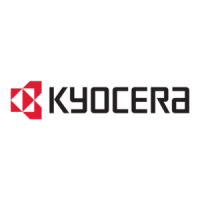Short grain paper can cause feeding problems in the printer. All paper used in the printer should be long grain. Other Paper Properties Porosity: Refers to
the density of the paper structure; that is, to how openly or compactly the fibers are bonded. Stiffness: Limp paper can buckle inside the printer, while paper
that is too stiff may bind. Either way the result is a paper jam.
Curl: Most paper has a natural tendency to curl in one direction. The paper should be loaded so that the natural curl is downward, to counteract the upward
curl imparted by the printer. Printed sheets will then come B-3 B.3. Special Paper out flat.
Most paper also has a top and bottom surface. Loading instructions are usually given on the paper package. Electrostatic properties: During the printing
process the paper is electrostatically charged to attract the toner. The paper must be able to release this charge so that printed sheets do not cling together in
the output tray. Whiteness: The contrast of the printed page depends on the whiteness of the paper. Whiter paper provides a sharper, brighter appearance.
Quality control: Uneven sheet size, corners that are not square, ragged edges, welded (uncut) sheets, and crushed edges and corners can cause the printer to
malfunction in various ways. A quality paper supplier should take considerable care to ensure that these problems do not occur. Packaging: Paper should be
packed in a sturdy carton to protect it from damage during transport. Quality paper obtained from a reputable supplier is usually properly packaged.
B.3. Special Paper This section explains printing on special paper. The page printer can use the following types of special paper. In this case, set the media
type according to the table below. Paper type Colored paper Preprinted paper Overhead projector transparencies Postcards Envelopes Label &RORU
3UHSULQWHG 7UDQVSDUHQF\ &DUGVWRFN (QYHORSH /DEHOV Media type When using the above types of paper, be sure to use products that are
specified for use with photocopiers and/or page printers. Feed paper other than colored paper or pre-printed paper from the MP (multi-purpose) tray or
optional envelope feeder (EF-1). Use paper that is sold specifically for use with copiers (heat-fusing type). Label paper and envelopes should not be placed in
the cassette; they must be fed manually and delivered in the face up stack. Since the composition and quality of special paper vary considerably, special paper
is more likely than white bond paper to give trouble during printing.
No liability will be assumed if moisture etc. given off in printing on special paper causes harm to the machine or operator. Before purchasing any type of
special paper, test a sample on the printer and check that printing quality is satisfactory. Specifications for each type of special paper are given below. B-4 B.
3. Special Paper Overhead Projection (OHP) Film OHP film must be able to withstand the heat of fusing during the printing process. It should satisfy the
conditions in Table B.3. Table B.
3 OHP Film Specifications Item Tolerance of heat Thickness Dimensional accuracy Squareness of corners Specification Must tolerate at least 190°C (374°F)
0.100 to 0.110 mm (3.9 to 4.3 mils) ±0.7 mm (±0.0276 in) 90° ±0.2° To avoid trouble, OHP film must be delivered face-up. If OHP film jams frequently, pull
the top of the sheet very gently as it leaves the printer. Adhesive-Backed Labels The basic rule for printing on adhesive labels is that the adhesive must never
come into contact with any part of the printer.
Adhesive paper sticking to the drum or rollers will damage the printer. Label paper must be manually fed. Label paper has a structure comprising three
layers, as shown in Figure B.1. The top sheet is printed on. The adhesive layer consists of pressure-sensitive adhesives. The carrier sheet (also called the
linear or backing sheet) holds the labels until use. Due to the complexity of its composition, adhesive-backed label paper is particularly likely to give trouble
in printing.
You're reading an excerpt. Click here to read official KYOCERA
FS-1750 user guide
http://somemanuals.com/dref/324820

